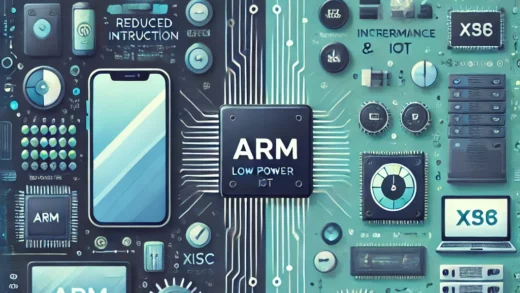
Kurt E. Petersen在1982年发表的论文《硅作为机械材料》探讨了单晶硅在各种商业产品中的应用,不仅因其优异的电子特性,还因其卓越的机械性能。Petersen详细回顾了硅作为机械材料的优势、相关的机械特性以及制造微机械结构的特定加工技术。通过引用大量文献实例,文章展示了硅在机械设备中的潜在应用,特别是在与微处理器兼容的高性能、低成本传感器方面的应用。

论文的要点包括:
- 硅的机械性能:硅的高强度、精度和可靠性使其成为微型机械设备的理想材料。
- 应用领域:例如压力传感器、热打印头、光纤高精度对准组件、喷墨打印头和电子设备中的微机械结构。
- 加工技术:论文讨论了各向异性腐蚀、掺杂依赖性腐蚀等微加工工艺,这些工艺对于在硅中创建机械结构至关重要。
- 潜力和未来趋势:硅的多功能性有望推动微机械领域的进一步创新,影响新型机械设备和组件的开发。
历史意义
Petersen的工作在硅微机械领域具有开创性,对技术和工业产生了深远影响。其主要贡献包括:
- MEMS的基础:Petersen对硅机械性能的探索和记录奠定了微机电系统(MEMS)发展的基础。MEMS技术自此在汽车传感器、医疗设备等众多应用中变得至关重要。
- 与电子学的整合:论文强调了在单个硅芯片上集成机械和电子组件的优势,提升了性能并降低了制造成本。这种集成推动了电子设备的微型化和效率提升。
- 硅基设备的商业化:通过介绍成功的商业产品,Petersen的工作为未来的创新和实际应用提供了路线图,鼓励了该领域的更多研究和开发。
- 多学科研究的影响:该研究促进了机械工程和半导体技术的交叉,激发了多学科的方法,结合材料科学、物理学和工程学,推动了先进微加工技术的发展。
Petersen的论文《硅作为机械材料》是一部开创性的作品,影响了后续的研究和开发,巩固了硅在电子学和现代机械应用中的基本材料地位。
Impact of “Silicon as a Mechanical Material”
The paper “Silicon as a Mechanical Material” by Kurt E. Petersen (published in 1982) discusses the increasing use of single-crystal silicon in various commercial products due to its excellent mechanical properties, in addition to its well-known electronic properties. Petersen provides a comprehensive review of silicon’s advantages as a mechanical material, its relevant mechanical characteristics, and specific processing techniques used in fabricating micromechanical structures. The document highlights numerous examples from the literature to illustrate the potential applications of silicon in mechanical devices, emphasizing its role in creating high-performance, cost-effective sensors and transducers compatible with microprocessors.
Key points from the paper include:
- Mechanical Properties of Silicon: Silicon’s high strength, precision, and reliability make it ideal for miniaturized mechanical devices.
- Applications in Various Fields: Examples include pressure transducers, thermal print heads, high-precision alignment assemblies for fiber optics, inkjet nozzles, and micro-mechanical structures in electronic devices.
- Processing Techniques: The paper discusses anisotropic etching, dopant-dependent etching, and other micromachining processes essential for creating mechanical structures in silicon.
- Potential and Future Trends: The versatility of silicon is expected to drive further innovations in micromechanics, influencing the development of new types of mechanical devices and components.
Historical Significance
The historical significance of Petersen’s work lies in its role in pioneering the field of silicon micromechanics, which has substantially impacted technology and industry. Key contributions include:
- Foundation of MEMS: Petersen’s exploration and documentation of silicon’s mechanical properties helped lay the groundwork for the development of Micro-Electro-Mechanical Systems (MEMS). MEMS technology has since become crucial in numerous applications, from automotive sensors to medical devices.
- Integration with Electronics: The paper underscores the advantage of integrating mechanical and electronic components on a single silicon chip, enhancing performance and reducing manufacturing costs. This integration has been a significant driver in the miniaturization and efficiency of electronic devices.
- Commercialization of Silicon-based Devices: By detailing successful commercial products that utilize silicon for its mechanical properties, Petersen’s work provided a roadmap for future innovations and practical applications, encouraging more research and development in this area.
- Influence on Multidisciplinary Research: The intersection of mechanical engineering and semiconductor technology fostered by this research has spurred multidisciplinary approaches, combining materials science, physics, and engineering to create advanced microfabrication technologies.
Petersen’s paper is a seminal work that has influenced subsequent research and development, cementing silicon’s role not only in electronics but also as a fundamental material in modern mechanical applications.
Original work can be retrieved from: https://ieeexplore.ieee.org/document/1456599
Accessible from: http://wla.berkeley.edu/~n245/fa01/PETERSEN.PDF

